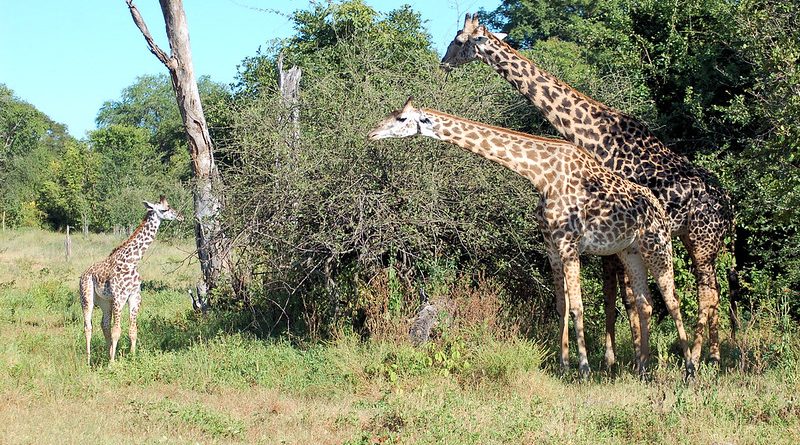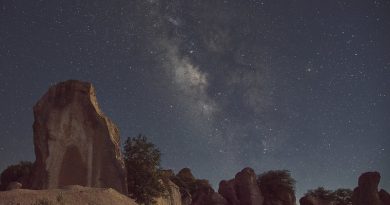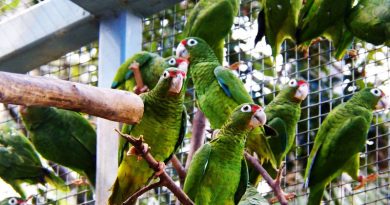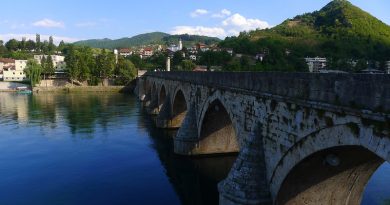Zambia’s game and wildlife parks
Zambia has been described as “The Real Africa.”
This is a country famed for its vast, unspoilt wilderness areas, with some of the most prolific populations of game on the African continent.
Zambia has moved from being a major copper producer and potentially one of the continent’s richest countries at independence in 1964 to one of the world’s poorest.
Colonial legacy, mismanagement, debt and disease are said to have contributed to the country’s tribulations. Politically, it switched from colonial government into an era of one-party rule lasting 27 years. A multi-party system emerged in the early 1990s.
It’s very important to keep in mind that although a safari is an essential part of a visit to Zambia it is something that cannot easily be done on a shoestring. Unless you are very, very prepared and experienced in wilderness survival it is very much recommended that you join a tour. There are no discounts to be found when you get there, so you might just as well book in advance.
Some highlights:
South Luangwa National Park
Called the “The Valley of Elephants”- (gateway to Malawi) this is one of Africa’s best game parks where high quality of guiding is pared with remarkable wildlife spectacles in true wilderness.
Some of the earliest evidence for humans in South Central Africa is currently emerging from excavations around the park. Stone tools dating to 2 million years ago have been found.
Here you can see lion buffalo, zebra, giraffe, wildebeest, elephant (one of the biggest concentrations in Africa), leopard, hippo & crocs in the Luangwa River, and tremendous bird life.
The founder of the first camp for photographic visitors (rather than hunters) in the park, Norman Carr, has left a legacy of good quality guiding as well as good conservation ethics. Therefore South Luangwa is one of the few parks in Zambia that was not affected by poaching problems in 1970s and 80s.
You can sstsy at a lodge run by one of Carr’s former apprentices. It’s important to pick a good and reliable tour operator as region is very remote and take a drive safari.
Lunga Luswishi Wildlife Project
The Lunga Luswishi Wildlife Project provides a safe haven for vervet monkeys and yellow baboons that have been orphaned or injured by the bush meat trade, the illegal pet trade and through road and snare accidents. The primates are confiscated by project staff and volunteers, including dedicated Ndola-based Honorary Wildlife Police Officer Bettina Hickman and the Zambian Wildlife Authority (ZAWA)
Many of these primates have suffered immense cruelty at the hands of humans and are received in terrible condition. The project ensures, however, that care is provided for each and every rescued animal, housing them initially for a period of intensive rehabilitation at the Munda Wanga Wildlife Sanctuary in Lusaka.
Staff at Munda Wanga provide life long care for those primates who because of their injuries cannot be released back to the wild. The others are nursed back to health by project staff, co-ordinated into social groups ready for release, and provided with pre-release training in predator avoidance survival skills.
A key aspect of this sanctuary care is veterinary support. Funding from Born Free USA is allowing a regular visit by a qualified wildlife vet to be made to the sanctuary for a full day once every 6 weeks. The vet, along with carrying out routine health monitoring checks for all primates in the sanctuary’s care, conducts training to upskill the keeping staff on nutritional matters, general husbandry, hygiene, handling etc. The vet also screens all incoming animals during their quarantine period and performs health checks on all primates prior to their release back into the wild to ensure they will not be putting wild primates at risk.
Thereafter, for those where a life in the wild is deemed possible, these are released as part of annual ‘soft’ release programmes into Zambia’s Lunga Luswishi Game Management Area to live the rest of their lives in the wild. Since the release project started 40 rescued yellow baboons and 80 vervet monkeys have been released back to the wild. From a research camp deep in the bush, project field staff track the released primates on a daily basis 6 months post-release to monitor their successful re-introduction back into the wild.
Additionally, in conjunction with ZAWA’s Lunga and Kalishusi Commands, the project conducts regular anti-poaching patrols to keep the area safe for both the released primates and other wildlife resident in the area. To date these anti-poaching patrols have led to 142 arrests and the confiscation of 110 guns, 311 bikes and over 1500 snares, proving that small projects such as this can make a huge contribution to wildlife conservation. The majority of released primates have integrated extremely well back into the wild and are now foraging and fending for themselves living a truly free life.
Chimfunshi Sanctuary
This Chimpanzee sanctuary that was started in 1983 by cattle farmers Dave and SheilaSiddles when a ranger brought them an orphaned chimp confiscated from poachers.In West and Central Africa each year thousands of chimpanzees are killed for bushmeat, reducing their numbers from 5 million wild chimpanzees in the 1950s to only 150,000 today. Chimpanzees are listed as an endangered species (CITES).
Chimpanzees continue to be hunted down and poached in their hundreds each year. The illegal hunting and subsequent sale of primate meat — known as “bushmeat” — is a thriving commercial enterprise and is on the increase with the depletion of forests. Sadly, it is believed that the killer human viruses such as Ebola and AIDS are directly related to the consumption of this ape meat, yet the practice shows no signs of abating.
Chimfunshi is one of the largest (119 chimpanzees) and oldest sanctuaries (founded in 1983) in Africa.
The daily routine at Chimfunshi is pretty standard, and includes early morning and mid-morning feeding of the chimpanzees (and other wildlife), including giving the youngest their bottles.
The Lower Zambezi National Park
This is the fourth largest river system in Africa, running through 6 countries.
You can watch elephants swimming in the river and eagles soaring overhead as you paddle down the river in a canoe.
Victoria Falls
UNESCO World Heritage Site, near the old colonial settlement at Livingstone .These are among the most spectacular waterfalls in the world. The Zambezi river, which is more than 2 km wide at this point, plunges noisily down a series of basalt gorges and raises an iridescent mist that can be seen more than 20 km away. 550 litres cascade over the lip every minute, creating falls 1,688m wide and with an average height of over 100
metres .Small islands interrupt the fall, which is effectively split into many small ones.




